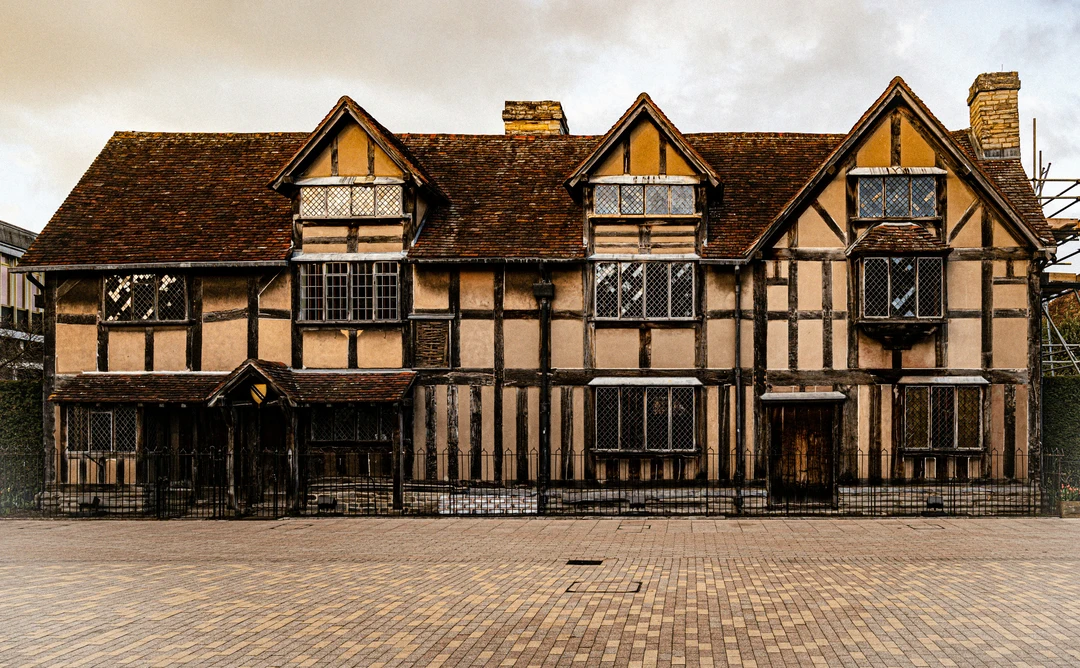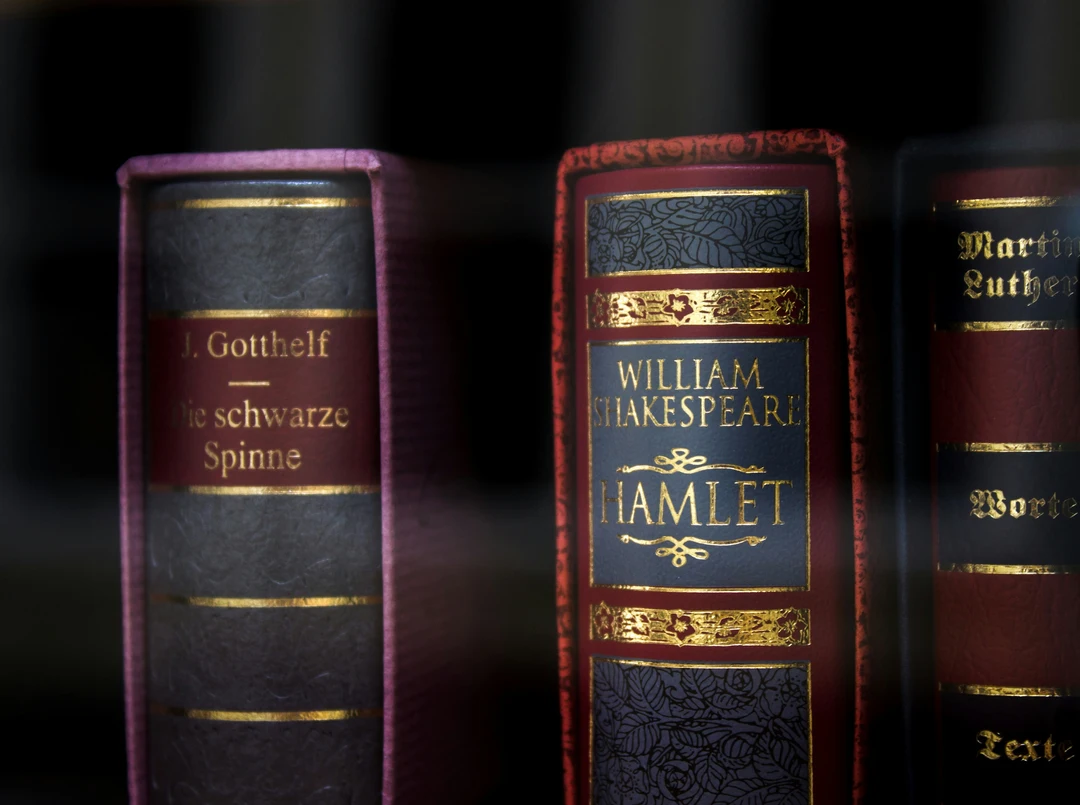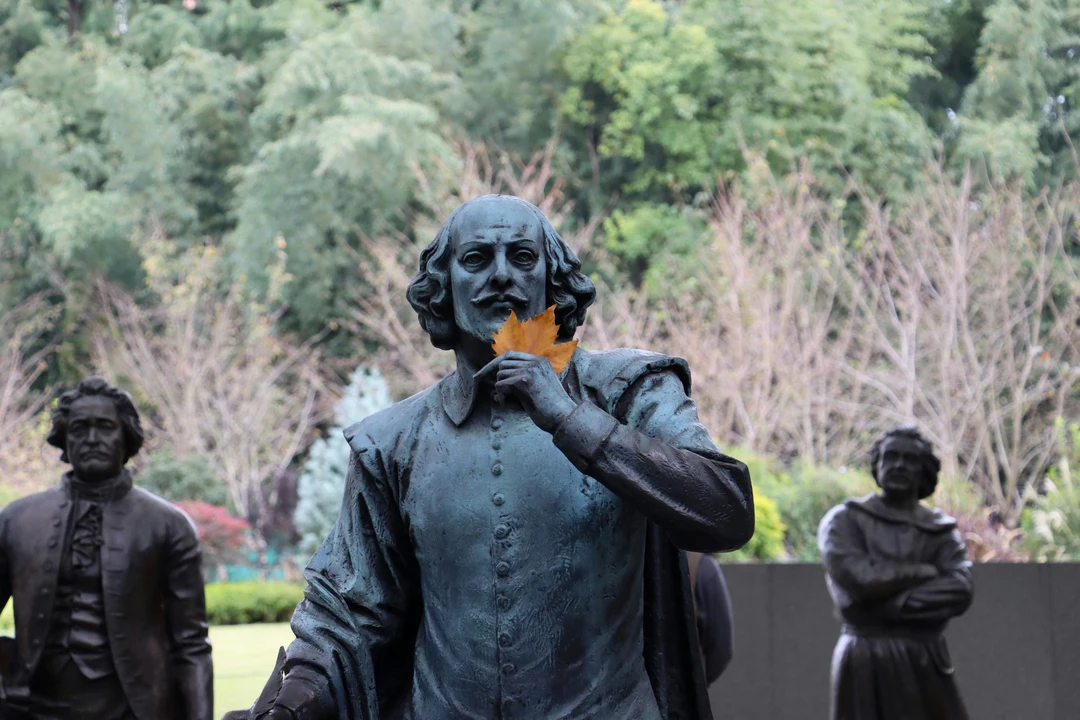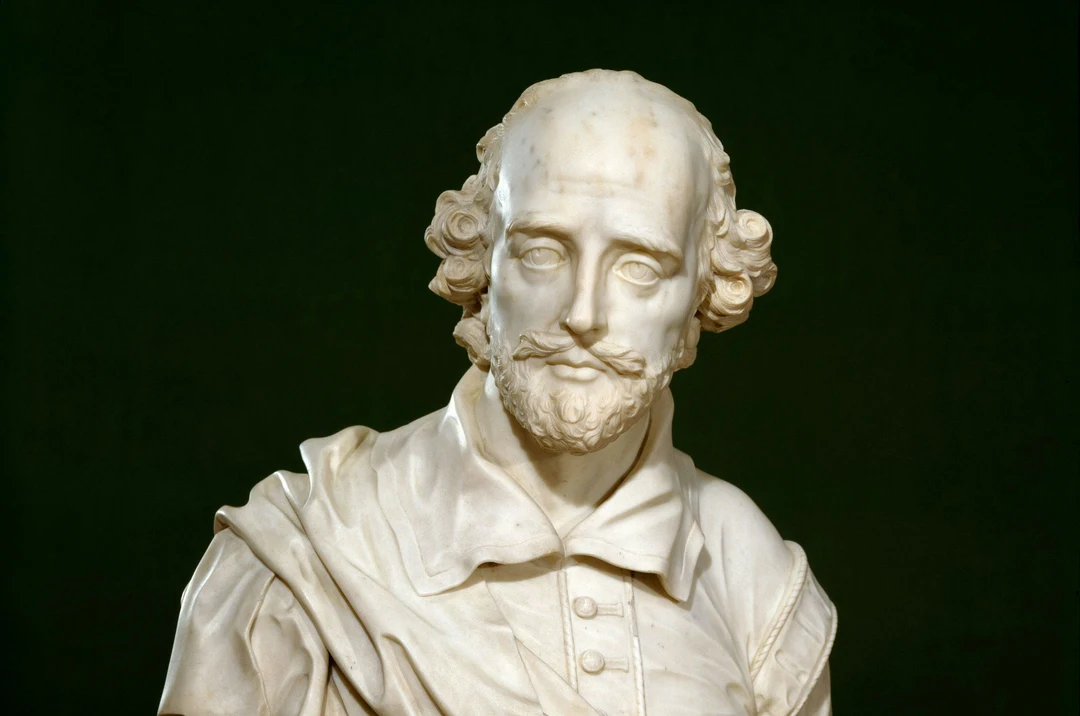William Shakespeare is one of the most famous playwrights in history, and has had an incredible impact on English literature – even the English language itself!
His influence has endured over hundreds of years. Despite writing most of his works in the 16th century, Shakespeare remains widely known to this day and his plays are still frequently performed all over the world. He produced a massive body of work, and his 38 plays have been translated into every major living language!
This article is a beginner’s guide to Shakespeare’s plays, aiming to provide an introduction to the works of one of England’s most famous writers. Whether you’re studying English and analysing his plays, or are simply fuelled by a love of literature, this article will help you find new ways to appreciate Shakespeare’s timeless plays.
If this article kindles your love for “The Bard”, consider looking into our Oxford summer schools – during our two-week courses, students have the opportunity to watch a Shakespeare play performed live in the centre of Oxford.
The World of Shakespearean Drama

During the 16th century, England witnessed a huge rise in the popularity of the theatre. Queen Elizabeth I’s reign saw plays evolve into a popular form of entertainment among diverse social classes. The queen herself encouraged the theatre, and her love for it made it fashionable.
As well as being a great place to socialise, the theatre was an affordable form of entertainment. The public could regularly attend cheap plays, and pay very little to stand and watch from the audience.
The Globe Theatre opened in 1599, and became world-renowned as Shakespeare’s primary venue for staging his plays. Described in the prologue to Shakespeare’s play Henry V as “this wooden O”, the Globe is known for its recognisable and unique round shape.
It’s also an open-air theatre, which means that all plays had to be performed in daylight. Most of the audience would stand on the ground in front of the stage. However, wealthy theatre-goers could sit in the galleries or balcony areas, and could even pay extra for a cushion!
Standing on the banks of the Thames in central London, a reconstruction of the Globe Theatre still hosts plays throughout the summer months – and for just £5 you can stand and experience the magic of Elizabethan theatre for yourself.
Theatre in the 16th century was a lot more interactive than it is today. Audiences used to actively engage with performances through cheers, jeers and applause.
Additionally, only men were allowed to act on stage! Women weren’t allowed to take part in performances until 1660, which meant that Shakespeare’s plays were originally performed by all-male casts, and it was quite normal for men to play female characters.
Elizabethan theatre also didn’t rely on elaborate stage sets in the way many plays do now. Plays used minimal props and set design was simple, mainly relying on the acting and the audience’s imaginations to carry the performance.
A Beginner’s Guide to Shakespeare’s Major Plays
Shakespeare introduced the world to many beautiful and timeless stories that are still performed regularly today. This next section will guide you through some of Shakespeare’s most famous plays, everything from the tragic to the comic and the historical.
Tragedies
Featuring some of his most famous work, Shakespeare’s tragedies delve deep into the human experience as he explores ambition, love and betrayal in these timeless plays.

Romeo and Juliet
Romeo and Juliet is one of the most famous, tragic love stories of all time. It follows a pair of star-crossed lovers from two families that hate each other. Juliet is a Capulet and Romeo is a Montague, and their families’ long feud means that their love is forbidden. Their passion and impulsivity results in a tragic ending for the couple.
The passion in this story has inspired and influenced countless people all around the world. The play explores powerful themes such as love, fate, societal conflict and the consequences of impulsive actions.
Romeo and Juliet continues to inspire modern stories, art and songs, and has been recreated again and again.
Hamlet
Hamlet is a complex tragedy, telling the story of Prince Hamlet of Denmark, who seeks revenge for his father’s murder while grappling with existential questions. Hamlet is most famous for the titular character’s iconic line:
“To be or not to be…?”
The play questions the purpose of revenge, murder and even existence itself, and introduces us to memorable characters including Hamlet, Ophelia, Claudius and Gertrude, each wrestling with their own moral dilemmas.
Themes of revenge, madness, mortality and the complexity of human nature are central to the play, making it a timeless discussion piece that’s still relevant to today’s modern society.
Othello
Othello recounts the tragedy of a Moorish general, who is manipulated by his ensign, Iago, into believing that his wife, Desdemona, is unfaithful. Othello includes well-known characters such as Othello, Iago, Desdemona and Emilia, whose actions drive the tragic plot forward.
It’s a compelling story that explores themes of jealousy, manipulation, racism and the fragility of trust. Full of passionate love and passionate rage, its popularity endures today, and many variations of the play have been performed all over the world.
King Lear
This famous play follows the tragic tale of King Lear’s descent into madness as he divides his kingdom amongst his daughters.
King Lear is full of betrayal and chaos, and is best known for its central themes of filial ingratitude, madness, power and the nature of authority. It reflects timeless struggles that can be compared to relationships even in the present day.
The interpersonal politics of the play’s memorable characters, including Lear, Cordelia, Goneril and Edmund, emphasise the untold truth of the human condition.
Macbeth
Macbeth is a dark tragedy full of murder and manipulation, following the downfall of Macbeth, a Scottish nobleman who is driven by ambition. Throughout the play, he’s constantly manipulated by his wife, as well as by supernatural forces, into regicide and tyranny.
The famous play features iconic figures such as the witches, Macbeth, Lady Macbeth and Banquo, whose actions explore the core theme of power and its corrupting influence.
Other themes such as ambition, guilt and fate are also central to Macbeth’s story.
Comedies
Moving on from the doom and gloom of the human condition, Shakespeare also explores the quirks and foibles of humanity. His comedies offer a delightful blend of wit, mistaken identities, love and reconciliation – all wrapped up in charm and laughter.

A Midsummer Night’s Dream
A Midsummer Night’s Dream is a timeless romantic comedy set in a magical forest. Its chaotic story follows the intertwining love lives of both mortal and fairy characters, amidst amusing events of mistaken identities. The play is full of iconic comedic moments, such as when Bottom’s head is magically turned into a donkey head!
Themes of love, illusion and the transformative power of the imagination are central to the play.
Memorable characters Oberon, Titania, Puck, Hermia, Lysander, Demetrius and Bottom drive the comedic plot forward, making it a memorable story that’s been recounted for centuries.
Twelfth Night
Twelfth Night is a beautifully messy comedy of mistaken identity and romantic entanglements. Set in the mythical land of Illyria, twins Viola and Sebastian are violently separated by a storm, spending the whole play undergoing various romantic adventures.
Themes of love, disguise and the fluidity of gender are wittily explored in Twelfth Night, making it a charming story. The play is hilarious, chaotic and sweet, and includes compelling characters such as Viola, Orsino, Malvolio and Sir Toby Belch.
Much Ado About Nothing
Set in the Italian town of Messina, Much Ado About Nothing is a witty comedy of romantic misunderstandings and deception. The play explores themes of honour and deception as its characters navigate the complexities of life and love.
The story is marked by Shakespeare’s trademark wit and humour, including chaotic weddings, vicious lies, and romances that prevail despite unlikely circumstances.
Memorable characters include Benedick, Beatrice, Claudio, Hero and Don John, whose relationships drive the comedic plot forward. Much Ado About Nothing has been performed over and over, and has become a timeless tale that can be adapted to fit any society.
As You Like It
As You Like It is a pastoral comedy set in the Forest of Arden, where characters find love, redemption, and ultimately themselves, amidst the beauty of the natural world. Featuring characters such as Rosalind, Orlando and Touchstone, the play offers an insightful look into human nature and relationships.
Themes of love, exile and the pursuit of happiness are explored in this charming story, against the backdrop of the idyllic countryside. It both mocks and celebrates the effects of love, making it a tale that’s both funny and heart-warming.
The Merchant of Venice
The Merchant of Venice intertwines comedy and drama in this story of love, prejudice and justice set in Renaissance Venice.
This thought-provoking play stars memorable characters such as Shylock, Portia, Antonio and Jessica, whose interactions highlight the tension between societal expectations and individual morality. Each of the characters’ moral dilemmas explore themes of mercy, justice, friendship and the complexities of human nature.
The Taming of the Shrew
The Taming of the Shrew is a comedy of courtship and marriage, where Petruchio attempts to “tame” the headstrong Katherine.
The play successfully challenges gender norms and expectations, while still emphasising their prevalence and power in 16th-century Elizabethan society. Shakespeare applies his characteristic wit and irony throughout the story, exploring themes of love, marriage, gender and societal expectations.
The Taming of the Shrew features iconic characters such as Petruchio, Katherine, Bianca and Lucentio and, like a lot of Shakespeare’s work, it has greatly inspired and influenced modern media. For example, the story is used as a basis for the plot of the beloved ‘90s film, 10 Things I Hate About You.
Histories
Shakespeare’s histories invite audiences – from Elizabethan England to the present day – to journey through England’s past. Contemplating questions of duty, honour and the complexities of leadership, the Bard poses important questions that are still relevant today.

Richard II
Richard II is a historical tragedy exploring the downfall of King Richard II and the crisis of legitimacy that engulfed medieval England during his reign. Themes of authority, divine right and the nature of kingship are central to the play, as Richard grapples with rebellion and betrayal.
This historical tale explores characters whose loyalties and ambitions shaped the course of history, including Richard II, Henry Bolingbroke (the future Henry IV), John of Gaunt and the Duke of York.
Through his historical plays, Shakespeare engages with English history powerfully, encouraging audiences to form a strong, emotional connection in the past, present and future.
Henry IV (Pt. 1 & 2)
This incredible historical drama depicts the tumultuous reign of King Henry IV, focusing on his struggles to maintain power amidst rebellion and political instability.
The two plays delve deep into the character of King Henry IV, using his words and deeds to explore themes of kingship, honour and the complexities of leadership. There are many compelling characters in the plays, including Prince Hal (the future Henry V), Falstaff, Hotspur and the Archbishop of York, whose actions contribute to shaping the fate of England.
Henry V
Henry V is a historical play chronicling the rise of the titular Henry V and his legendary victory at the Battle of Agincourt during the Hundred Years’ War.
Memorable characters such as King Henry V, the Dauphin, Fluellen and Katherine of Valois highlight the triumphs and tribulations of medieval warfare, as well as themes of leadership, patriotism and the burdens of kingship. Above all, the play shows how Henry navigates the challenges of war and diplomacy, encouraging us to connect with, and humanise, historical figures.
Richard III
This dark historical drama follows the rise and fall of King Richard III, England’s infamous monarch known for his Machieavellian tactics and ruthless ambition. The play explores themes of villainy, conscience and the pursuit of power, through the details of Richard’s manipulation and deceit.
Important characters include Richard III, Buckingham, Lady Anna and Queen Elizabeth, whose fates are intertwined in the intricate web of Richard’s scheming and treachery!
Key Themes and Motifs in Shakespeare’s Work
Now, let’s dig into some of the key themes and motifs that resonate throughout Shakespeare’s plays.

Love and romance
Many of Shakespeare’s plays are driven by love and its beautiful, yet often destructive, impact. Love is woven into both tragic and comic narratives, driving the characters forward, to both happy endings and devastating deaths. Many of his comedies end in marriage, where love is the ultimate goal that drives the adventures of the plot.
A vast number of Shakespeare’s plays include romantic love, yet friendship and familial ties are also large themes in a lot of his works. Love often intersects with broader narratives of loyalty, betrayal and sacrifice, upping the stakes to enhance the power of Shakespeare’s stories.
Power and ambition
Shakespeare often uses his narratives to explore different power dynamics, as well as the impact of authority and political ambition. Many of his characters are driven and intensely motivated.
However, despite including characters possessed by a lust for power – and a willingness to kill in order to achieve it! – Shakespeare is careful to also emphasise the consequences of unchecked ambition. Many of his plays explore the effect of pursuing power at the expense of morality and ethics, and it typically doesn’t end well for these characters.
Fate and free will
Another prevalent theme in Shakespeare’s work is the role of fate. Many of his plays explore destiny and agency, and debate whether characters are in charge of their own fortune, or simply doomed to their predetermined fates.
Characters often grapple with fate, and there’s a clear split between those who attempt to defy their predestined future, and those who accept that their outcome is inevitable.
Romantic and powerful notions of destiny and fate often dominate Shakespeare’s narratives, leaving the audience with the philosophical question: have you ever been capable of individual agency?
Appearance vs reality
Shakespeare’s plays, particularly his comedies, are full of deception and disguise. Characters adopt fake identities, dress as other characters, hide in secret to eavesdrop on others, and conceal their genders. Shakespeare constantly marks a contrast between outward appearance and inner truth.
Throughout his plays, many characters navigate the complexities of identity, perception and self-awareness, amidst layers of illusion and reality. As well as being entertaining and intriguing for the audience, this overarching theme encourages some deep inner reflection.
Overall, Shakespeare has produced a plethora of literary masterpieces, which remain world-renowned even centuries after his death. There’s so much to decipher from these timeless tales of life, love and the people around us.

By Jessica Mason





